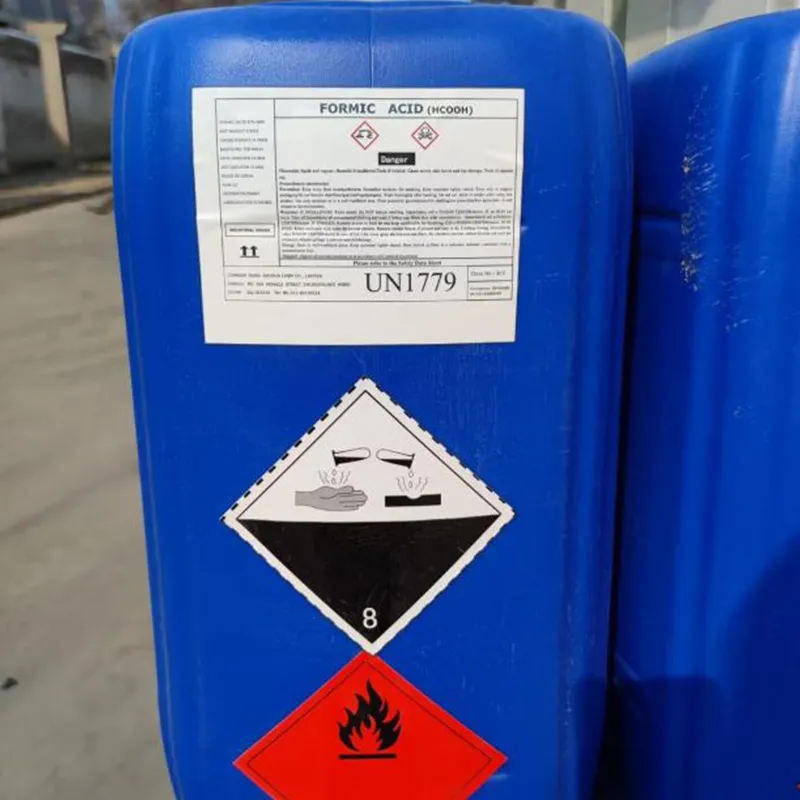
Exploring the Relationship Between Ants and Their Use of Formic Acid in Defense
Ants and Formic Acid A Unique Relationship
Ants are fascinating creatures that display remarkable social structures and behaviors. Among their many features, one of the most interesting aspects is their production of formic acid, a compound that plays a critical role in their survival and interactions with other species.
Formic acid, scientifically known as methanoic acid, is a simple carboxylic acid that is naturally produced by ants. Its name is derived from the Latin word formica, meaning ant, highlighting its close association with these industrious insects. The primary purpose of formic acid in the ant world is to serve as a defense mechanism. When threatened, ants can spray formic acid at predators, which acts as a potent irritant. This ability to produce and utilize formic acid is particularly advantageous for ants, allowing them to fend off larger threats and protect their colonies.
In addition to its defensive properties, formic acid plays a role in the communication among ants. Ants are social insects that rely heavily on pheromones for signaling various types of information, from food sources to potential dangers. Formic acid can serve as a chemical signal, warning other ants of approaching threats or marking the trails to food. This chemical communication system is crucial for the efficient functioning of ant colonies, allowing them to work together in a highly organized manner.
ants and formic acid

Research has also shown that formic acid has practical applications beyond the ant world. For instance, it is used in various industrial processes, including textile manufacturing and the production of plastics. Moreover, formic acid is gaining attention within the agricultural sector as a potential natural pesticide due to its antifungal and antibacterial properties. The more scientists study this compound, the more potential uses in eco-friendly practices they seem to uncover.
The relationship between ants and formic acid extends to their interactions with other species, particularly in the context of symbiotic relationships. Some plant species have evolved to attract ants by providing them with nectar or other rewards. In return, ants protect these plants from herbivores and even help to pollinate them. These mutualistic interactions are a testament to the sophistication of ecological relationships where formic acid plays a subtle yet crucial role.
Moreover, formic acid’s efficacy as a defense mechanism in ants has inspired biomimicry in the field of materials science. Researchers are exploring the potential of developing biodegradable materials that mimic the properties of formic acid for environmental applications. This innovative approach demonstrates how studying the natural world can lead to advancements in technology and sustainability.
In conclusion, the connection between ants and formic acid extends far beyond mere chemical reactions. It encompasses defense mechanisms, communication strategies, and even intriguing ecological relationships. As we continue to explore the complexities of the natural world, understanding such interactions unlocks insights into both the behavior of these tiny creatures and potential applications that benefit society at large. Whether through their industrious nature or the fascinating uses of the chemicals they produce, ants remind us of the intricate web of life that exists around us.
-
Why Glacial Acetic Acid Food Grade Is Essential in FlavorNewsMay.26,2025
-
Surging Export Growth of Food Additives in ChinaNewsMay.26,2025
-
How Ammonium Nitrate Fertilizer Boosts Crop YieldsNewsMay.26,2025
-
How 1,2,3-Benzotriazole Shields Plastics from UV DegradationNewsMay.26,2025
-
Cyanide in Gold Mining: Protecting People and the PlanetNewsMay.26,2025
-
Aluminum Hydroxide in Modern Sunscreen FormulationsNewsMay.26,2025
-
Understanding Synthetic Rubber OptionsNewsApr.27,2025
Hebei Tenger Chemical Technology Co., Ltd. focuses on the chemical industry and is committed to the export service of chemical raw materials.
-

view more DiethanolisopropanolamineIn the ever-growing field of chemical solutions, diethanolisopropanolamine (DEIPA) stands out as a versatile and important compound. Due to its unique chemical structure and properties, DEIPA is of interest to various industries including construction, personal care, and agriculture. -

view more TriisopropanolamineTriisopropanolamine (TIPA) alkanol amine substance, is a kind of alcohol amine compound with amino and alcohol hydroxyl, and because of its molecules contains both amino and hydroxyl. -

view more Tetramethyl Thiuram DisulfideTetramethyl thiuram disulfide, also known as TMTD, is a white to light-yellow powder with a distinct sulfur-like odor. It is soluble in organic solvents such as benzene, acetone, and ethyl acetate, making it highly versatile for use in different formulations. TMTD is known for its excellent vulcanization acceleration properties, which makes it a key ingredient in the production of rubber products. Additionally, it acts as an effective fungicide and bactericide, making it valuable in agricultural applications. Its high purity and stability ensure consistent performance, making it a preferred choice for manufacturers across various industries.











